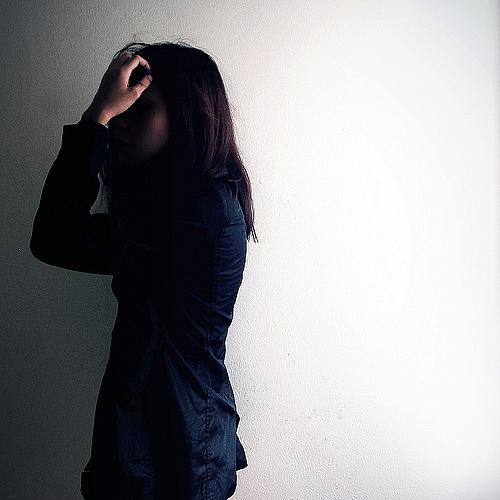Mental health care in rural northern California: Fated for failure?

Photo courtesy of Helga Weber/Flicker. This photograph shows a woman illustrating the angst of bipolar disorder.
Are the low-income counties of far-northern California destined for mental health systems that leave many of their most severely ill residents untreated?
With high rates of many mental illnesses and not much money for counties to spend on them, sometimes it seems that way for the friends and family of people with mental illnesses in California’s “North State,” as the cluster of counties just south of the Oregon border is called locally.
From a mother whose mentally ill adult son commits crimes just to get a night indoors – at jail – to a safety-net care provider whose involvement with mental illness goes beyond the job, struggling for decades to get her childhood friend the level of care she truly needs, many residents tell stories of seeking out county help, to no avail.
County mental health officials don’t deny that there’s a problem, but tend to offer the hands-tied, “shoestring budget” explanation.
But does it have to be that way? Is there a more reliable safety net for those the counties may not be able to afford initially helping than jail or an emergency room?
Specifically, my series will be broken down into: An explanatory story on how it’s determined who gets help through the counties’ mental health systems and how their budgets look now compared to in recent years; a human-impact story on the toll of untreated or undertreated mental illnesses focusing on friends and family members such as those referenced above; a public safety-impact piece on the potential danger of leaving severely mentally ill people without the care they need, both in terms of the possible danger to themselves and others.
But – rather than looking only at what’s missing in the North State’s mental health system – I’ll also do a final piece on what has worked in similar areas, and whether local officials think those programs could take off here.
The first few installments of this series will come from a classic enterprise style, while the final will be solutions-oriented, in the hope that the skills I learn through this fellowship can truly lead to some kind of change here.
The stories will include photos, videos, social media posts and a live-streamed panel with experts in the community to take questions from the public.

